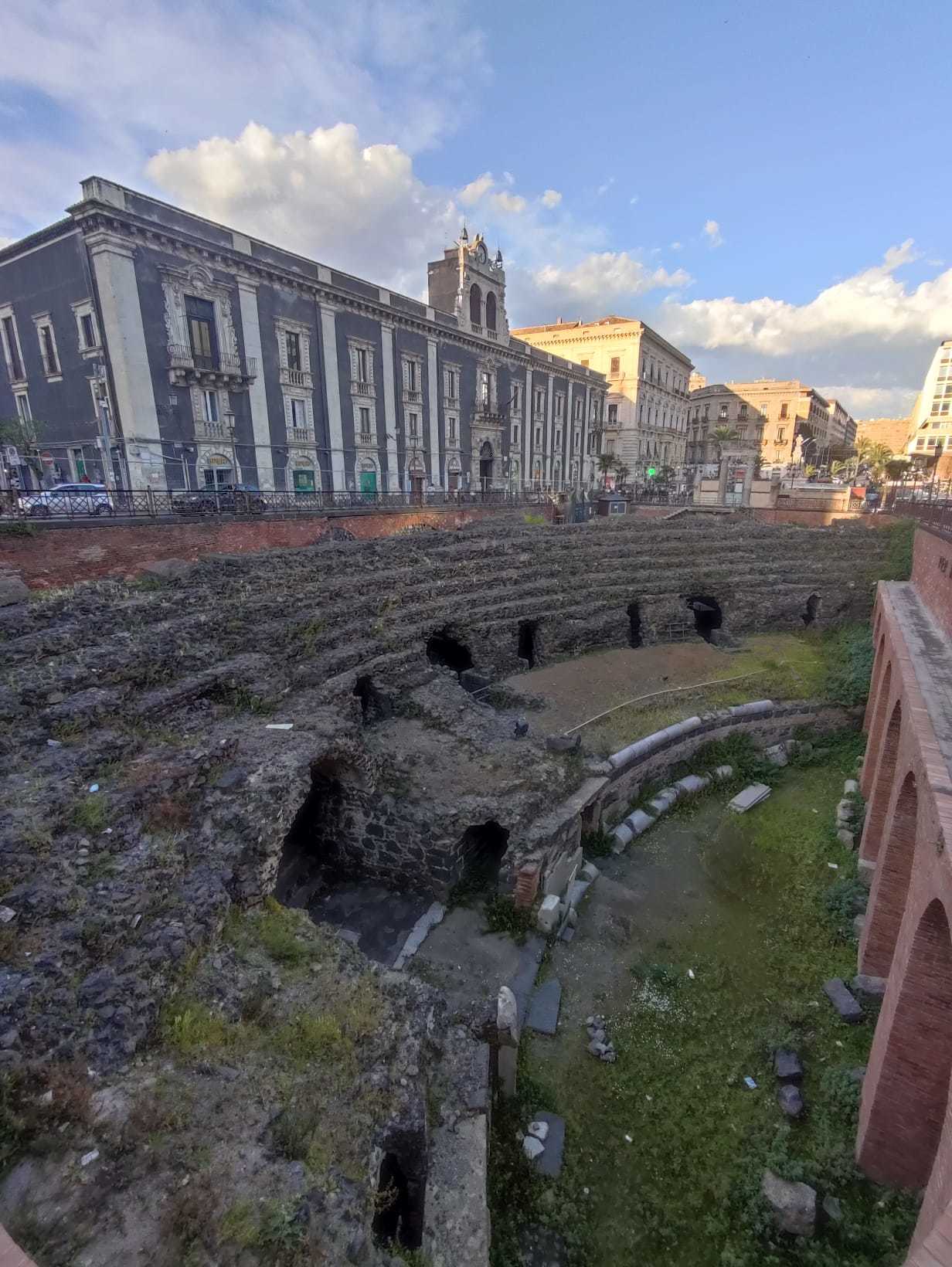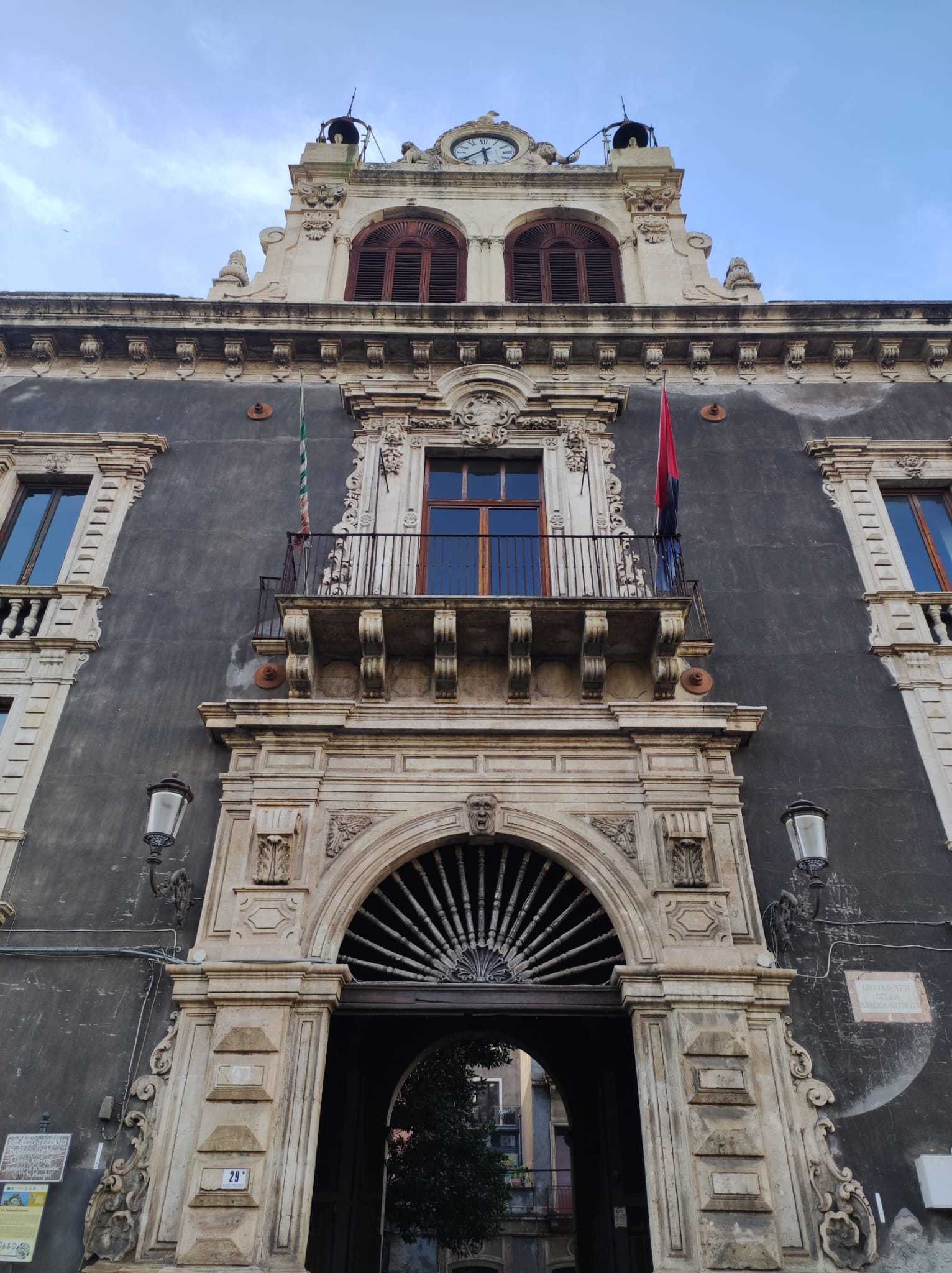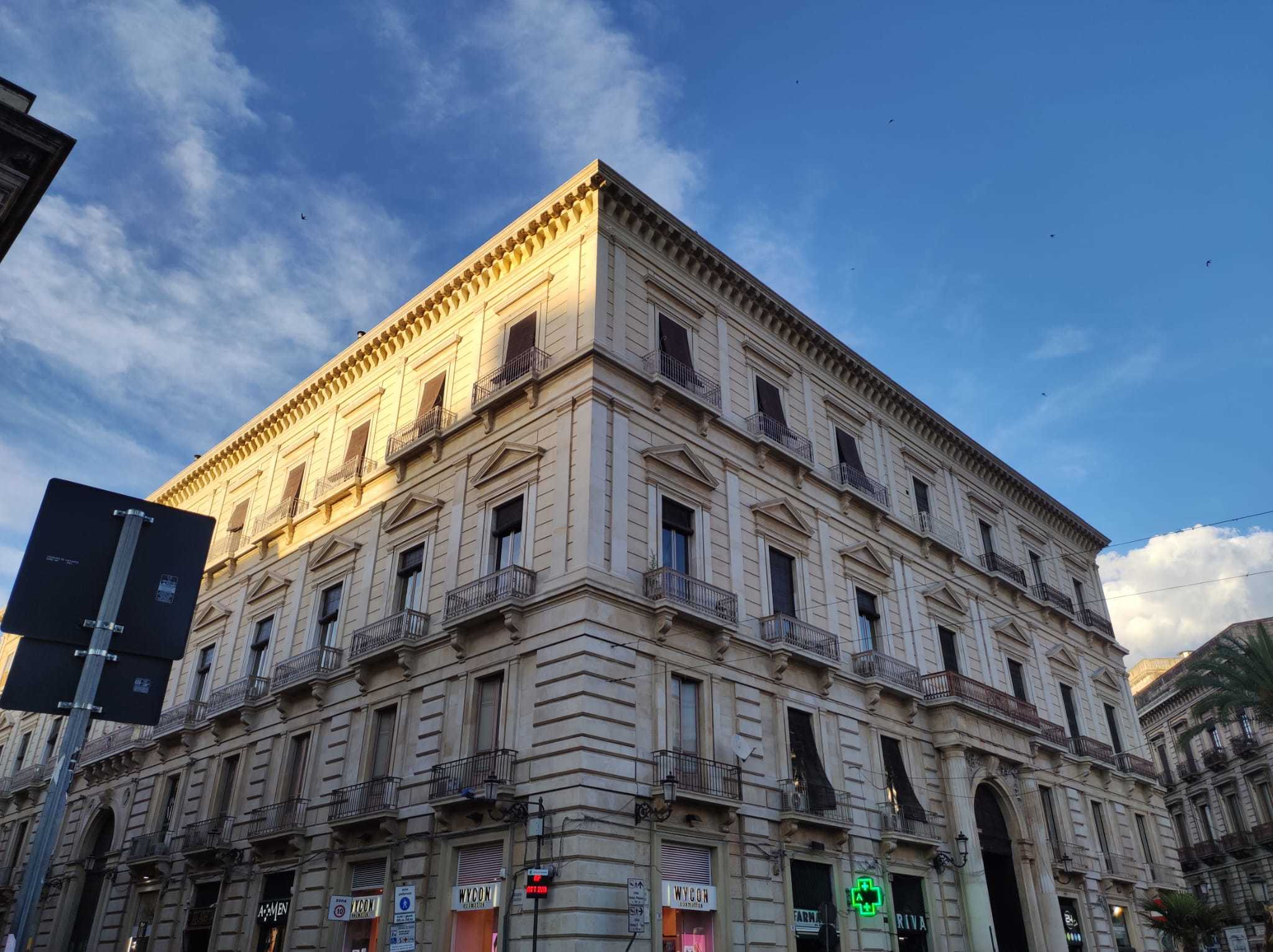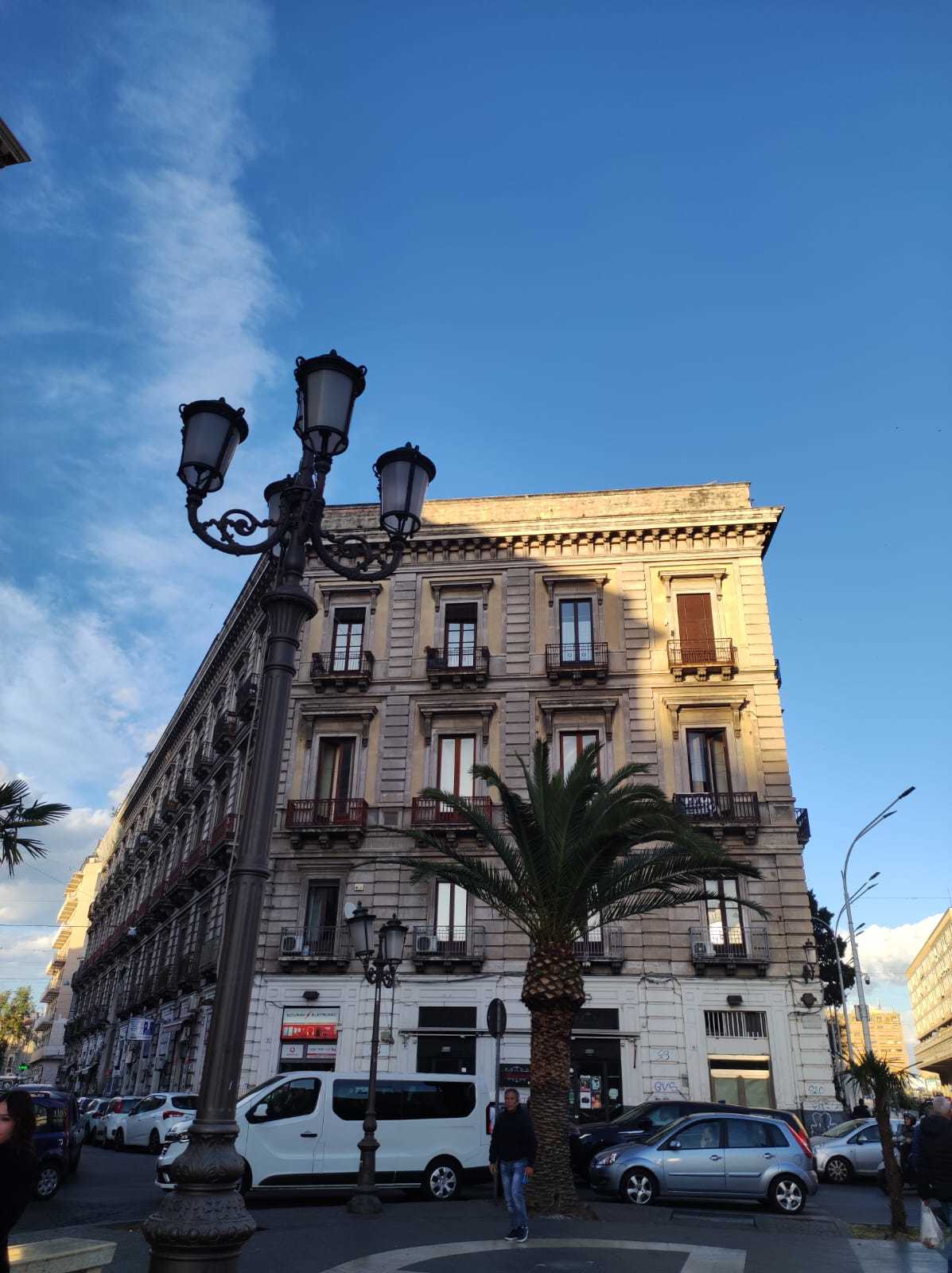Catania "Vecchia"
ALERT! ⚠️
➡️[E' necessario portare una penna per firmarsi! I log senza firma saranno cancellati.]⬅️
➡️[It is necessary bring with you a pen for sign in! Logs without sign will be deleted.]⬅️
ITA--

Via Etnea divide in due quella che oggi è chiamata Piazza Stesicoro.
Da un lato troviamo Piazza con la Statua di Vincenzo Bellini

e dall'altro l'anfiteatro romano.

L'anfiteatro risale al 2 secolo ed è di epoca imperiale romana. La parte in cui sorge, a ridosso della collina Montevergine, era adibita a necropoli.
Oggi, l'anfiteatro guarda la chiesa di San Biagio (per i locals Chiesa di Sant'Agata alla Fornace). Degli studi del 2008 hanno ricostruito la planimetria dell'edificio. si è calcolato che poteva contenere 15.000 spettatori seduti. L'anfiteatro di Catania, strutturalmente il più complesso degli anfiteatri siciliani e il più grande in Sicilia, appartiene al gruppo delle grandi fabbriche quali il Colosseo, l'anfiteatro di Capua, l'Arena di Verona. Oggi il monumento fa parte del Parco archeologico e paesaggistico di Catania e della Valle dell'Aci.

Negli anni le colonne e gli altri ornamenti vennero smantellati per la costruzione di altri importanti monumenti della città, tipo la Cattedrale di Sant'Agata. La struttura fu scoperta e abbandonata diverse volte, utilizzata come base per gli altri palazzi nel corso del tempo, e lasciata nel degrado dopo la seconda guerra mondiale.

Nel 1997 iniziarono i lavori per la riqualifica e nel 1999 aperta al pubblico per un breve periodo. Per motivi di sicurezza, negli anni subì chiusure e riaperture,tutt'ora è chiusa al pubblico. Una vecchia leggenda del 19 secolo narra che una scolaresca si insinuò nelle strutture per una visita, ma non ne uscì più (tra i locals gira ancora questa voce).

Sulla destra dell'anfiteatro, si trova Palazzo Tezzano costruito nel 1709 dal conte Niccolò Tezzano. Divenne nel tempo un ospedale e poi il tribunale, spostato solo nel 1953 con la creazione del nuovo tribunale in Piazza Giovanni Verga.

Di fronte la Statua di Vincenzo Bellini e il Palazzo Tezzano si trova Palazzo Paternò del Toscano costruito nel 1870 dall'architetto Errico Alvino. Il palazzo fu abitato dalla famiglia Tedeschi Bonadies baroni di Villermosa che destinò il palazzo al nipote Antonino Paternò del Toscano, primo sindaco di Catania.

Proprio dietro la Piazza si trova Palazzo Beneventano della Corte, edificato nel 1880 per il barone Giuseppe Luigi Beneventano. Fu l'unico edificio a non essere distrutto dopo la demolizione del quartiere di San Berillo poichè acquistato dal Banco di Sicilia.
____________________________________________________
ENG--
Via Etnea is divided into two Stesicoro's Square. On one side we found the Roman amphitheatre and on the other side the Vincenzo Bellini statue. The Roman Amphitheatre dates back to the 2nd century and is from the Roman imperial era. The part where it stands, close to the Montevergine hill, was used as a necropolis. Today, the amphitheatre looks at the church of San Biagio (for locals Church of Sant'Agata alla Fornace). Studies in 2008 reconstructed the plan of the building. it was calculated that it could hold 15,000 spectators seated. The Amphitheatre of Catania, structurally the most complex of Sicilian amphitheatres and the largest in Sicily, belongs to the group of large factories such as the Colosseum, the Amphitheatre of Capua, the Arena di Verona. Today the monument is part of the archaeological and landscape park of Catania and the Aci Valley.
Over the years the columns and other ornaments were dismantled for the construction of other important monuments of the city, such as the Cathedral of Sant'Agata. The structure was discovered and abandoned several times, used as a base for the other palaces over time, and left in decay after World War II.
In 1997 work began on the redevelopment and in 1999 it was opened to the public for a short time. For security reasons, over the years it has been closed and reopened, still closed to the public. An old legend of the 19th century tells that a schoolgirl crept into the structures for a visit, but did not come out anymore (among the locals still this rumour).
On the right of the amphitheatre, is Palazzo Tezzano built in 1709 by Count Niccolò Tezzano. It became over time a hospital and then the court moved only in 1953 with the creation of the new court in Piazza Giovanni Verga.
Opposite the Statue of Vincenzo Bellini and the Palazzo Tezzano is Palazzo Paternò del Toscano, built-in 1870 by the architect Errico Alvino. The palace was inhabited by the Tedeschi Bonadies Barons of Villermosa family who gave the palace to their nephew Antonino Paternò del Toscano, the first mayor of Catania.
Just behind the square is Palazzo Beneventano della Corte, built-in 1880 for Baron Giuseppe Luigi Beneventano. It was the only building not to be destroyed after the demolition of the district of San Berillo because it was purchased by the Banco di Sicilia.
